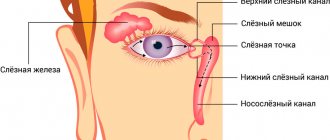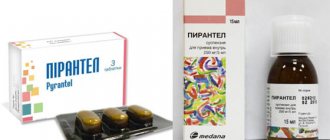Giardiasis
is a disease caused by Giardia - microscopic intestinal parasites belonging to the type of protozoa, the class of flagellates. Giardia are intestinal parasites, the main areas of their vital activity are the duodenum and the beginning of the small intestine. Giardia is carried by many animals, including rats, mice, cats, and dogs. But the main source of giardiasis infection for humans is humans.
Giardia infestation can lead to a functional disorder of the small intestine, although in a significant number of cases a person carrying Giardia may not have any complaints. However, in accordance with WHO recommendations, the diagnosis of giardiasis is established when Giardia is detected in any case, even in the absence of pronounced symptoms.
Giardia is named after Dr. D.F. Giardia, a Czech by birth, who described this intestinal parasite in 1859 and worked in Russia since 1860. However, the history of Giardia in European medicine begins with a description made much later by the French biologist Alfred Giard (the Latin spelling of his last name is Guard). Therefore, in foreign medicine, another name for giardiasis is accepted - giardiasis (pronounced jardiaz or guardiaz).
The prevalence of giardiasis depends on the development of hygienic culture. In European countries, no more than 3-5% of people are affected by Giardia. Among children, giardiasis is detected twice as often as in adults. This is due to the fact that children often do not follow hygiene rules.
Causes of giardiasis
The mechanism of transmission of Giardia is fecal-oral. That is, Giardia is excreted from the body along with feces, and enters through the mouth - along with food or water.
Giardia exists in two forms - vegetative (in which Giardia feeds and grows) and in the form of a cyst (when the body of the microorganism is covered with a protective shell). Outside the human body, vegetative forms die, but cysts remain viable.
For Giardia infection to occur, it is enough for 10 to 100 cysts to enter the body. Giardia cysts can be present in the ground, in water, including running water and even spring water, and carried on the legs of flies. Only cooling below 13°C or boiling kills cysts.
A cyst that enters the human body reaches the duodenum, where it dissolves under the influence of intestinal juice. From one cyst, two vegetative forms of Giardia are formed. Giardia attaches to the villi of the intestinal mucosa and is believed to feed on products of parietal digestion. Giardia reproduces by division. Every 9-12 hours the number of Giardia doubles.
When it enters the colon, Giardia changes shape, turning into a cyst. Cysts leave the body with feces.
Preventing relapses of giardiasis
There are no known pharmacological agents that effectively prevent relapse of giardiasis. Reinfection often occurs in endemic areas or in situations where hygiene levels are poor or contaminated water (such as private wells) is not properly treated. Re-infection can be prevented by consistent hand hygiene, especially after bowel movements and handling soiled diapers. You should also practice hand hygiene before preparing and eating food. To reduce the risk of disease transmission, children with diarrhea should be removed from childcare settings until the diarrhea stops. Children with giardiasis should not go to recreational water facilities for 2 weeks after the symptoms disappear.
Symptoms of giardiasis
Giardia can number up to a million per square centimeter of intestinal wall. They mechanically damage blood cells (erythrocytes), cause irritation of nerve endings, and disrupt the absorption process. As a result, inflammation develops. Giardia waste products can cause allergic reactions.
Giardiasis can occur in acute or chronic form. Symptoms of acute giardiasis may appear 1-3 weeks after infection.
Giardiasis most often manifests itself as an intestinal disorder. In some cases, giardiasis can cause disruption of the gallbladder and stagnation of bile. In the case of long-term giardiasis (especially in children), neurotic symptoms may be observed.
Abdominal pain
With giardiasis, there is pain in the epigastric region and in the navel area. The pain is usually dull, but in some cases it can be sharp.
Flatulence
Increased gas formation (flatulence) is usually accompanied by a feeling of fullness in the stomach. Belching and heartburn are possible.
More about the symptom
Stool disorder
Possible diarrhea up to 3-5 times a day; The stool is initially watery or foamy, but may later become greasy. Diarrhea may give way to constipation.
Allergic manifestations
Possible allergic manifestations of giardiasis:
- hives;
- severe itching;
- atopic dermatitis;
- bronchial asthma;
- allergic rhinitis, conjunctivitis, blepharitis and some other manifestations.
Neurotic symptoms
With a long course of giardiasis (especially in children), the following neurotic symptoms may be observed: weakness, fatigue, irritability (tearfulness in young children), headaches, dizziness, cardialgia.
Ways of infecting children with Giardia
If a child has swallowed more than 10 cysts, we can say with confidence that he is infected with Giardia. Parasites can be found in the soil and sand of playgrounds, in water from an unfavorable source or reservoir. Giardia is found in breast milk and on the surface of unwashed vegetables and fruits.
Ways of infection with Giardia:
- Drinking unboiled water;
- Infection while swimming in a pond;
- Contact with clothing and belongings of an infestation carrier;
- Eating insufficiently washed foods that are not properly cooked.
Methods for diagnosing giardiasis
Giardiasis has no specific symptoms, and its manifestations are varied. Therefore, a typical situation is when a person is treated by different specialists for different symptoms, but giardiasis remains undetected.
You should definitely get tested for Giardia in the following cases:
- with a tendency to intestinal diseases, as well as with their chronic course;
- with eosinophilia (the presence of an increased number of eosinophils in the blood);
- for allergic manifestations;
- in case of intestinal disorder acquired while traveling abroad, especially to southern and exotic countries;
- in case of neurotic symptoms, especially against the background of intestinal disorders.
Giardiasis is diagnosed based on laboratory tests. To diagnose giardiasis, the following are usually used:
Microscopic examination
The feces are examined for the presence of Giardia cysts, and the intestinal contents are examined for the presence of vegetative forms.
Serological blood test
Using a serological analysis, the presence of antibodies to Giardia in the blood is determined.
More information about the diagnostic method
Stool examination
An immunological test can detect a specific Giardia antigen in the stool.
Sign up for diagnostics To accurately diagnose the disease, make an appointment with specialists from the Family Doctor network.
How is diagnosis carried out?
It is not easy to establish a diagnosis of giardiasis - if Giardia cysts or their vegetative forms are found, then the diagnosis is clear. But they are only detected in 40% of cases even in the presence of giardiasis, and vegetative forms of Giardia can only be detected with special methods of testing - feces are taken immediately after defecation, warm, then they can be detected. In young children, it is almost impossible to pass such a test, since you need to go to the toilet strictly on a schedule. You cannot donate stool after enemas or laxatives.
Cysts can also be detected during a routine stool examination, but to find out for sure whether they are there or not, you need to donate stool three times with an interval of three to four days. You can also donate blood for antibodies to Giardia; this method determines the presence of fresh or recently suffered Giardiasis in the blood; it is effective only with a parallel examination of stool. Older children can undergo duodenal intubation and take samples for analysis.
Of course, giardiasis is unpleasant and can cause trouble for the child, but it can be treated quite simply and effectively. If you suspect your child may be infected with giardiasis, consult a doctor immediately!
Treatment of lamblia in children
When treating Giardia in children, it is necessary to take into account the patient’s reduced immunity, concomitant pathologies, the likelihood of reinvasion, and the emergence of resistant strains of Giardia. To conduct drug therapy in children, the doctor must choose an effective drug with low toxicity for the child’s body. In each case, an individual treatment regimen is selected.
Possible drug combinations:
- Metronidazole - taken with meals, starting from 2 years, 0.4 g three times a day. The course of treatment is 5 days.
- Albendazole – taken once a day, 15 mg/kg body weight. Course – 5 days.
- Furazolidone - taken after meals 4 times a day, 10 mg/kg body weight. Course – 7 days.
- Flamin + No-shpa, then Makmiror or Intetrix.
Flamin dosage – 1/2 tablet for 10 days, taken 3 times a day an hour before meals.
Macmiror dosage is 15 mg/kg body weight twice a day for 7-10 days, used in children over 2 years of age, taken after meals.
Dosage of Intetrix – 1/2 -1 capsule after meals for 10 days three times a day.
Recovery stage after treatment
At this stage, the functions of the digestive system are restored and the immune system is strengthened.
Activities of the recovery phase:
- A gentle diet.
- Herbal medicine (decoctions of herbs, birch buds, cranberries, lingonberries).
- Drugs to restore immunity.
- Non-specific protective agents (pumpkin seeds, purified sulfur preparations, propolis, zinc sulfate).
- Sorbents for restoring intestinal microflora and cleansing it of waste products of parasites (Smecta, Polysorb, Polypefan, activated carbon).
Subtleties of caring for sick children
To prevent a child from self-infection with Giardia and stop the spread, you must carefully follow hygiene rules:
- The child's and caregiver's nails should be clean and trimmed short.
- Children with giardiasis should have separate dishes, which after eating should be washed with hot water and treated with a disinfectant.
- After caring for a child (changing diapers, underwear), you need to wash your hands with special care.
Giardiasis in children: the problem of diagnosis and choice of therapy
Giardia (Lamblia intestinalis, Giardia lamblia) are single-celled flagellated organisms that parasitize the proximal parts of the small intestine. The vital functions of Giardia determine their pathogenic effect on the human body. Localized in the area of the brush border of the intestinal villi, Giardia is repeatedly sucked in and detached from the epithelial cells, causing mechanical damage to the enterocytes. In addition, they release metabolic products that have a toxic effect and compete for the absorption of nutrients. The result of these processes is: – disruption of the regeneration processes of the epithelium (frequent renewal leads to the predominance of young, functionally immature cells, shortening of the villi, disruption of the synthesis of certain enzymes and, as a consequence, to the development of lactase deficiency); – increasing the permeability of the intestinal wall to large molecular antigens and triggering the mechanisms of food allergy formation; – sensitization of the human body by metabolic products, substances formed during the death of Giardia; – disruption of the processes of parietal digestion, the formation of malabsorption syndromes, micronutrient deficiency, multivitamin deficiency; – triggering of pathological viscero-visceral reflexes from the digestive organs due to irritation of nerve endings, which contributes to the appearance of abdominal syndrome; – changes in the chemical parameters of chyme and disruption of the microbiological picture of different parts of the intestine (formation of intestinal dysbiosis); – dysfunction of the liver as a detoxification organ during prolonged giardiasis invasion. The following variants of clinical symptoms of giardiasis can be distinguished: 1) syndrome of intoxication and autonomic disorders (fatigue, malaise, low mood, irritability, tearfulness, headaches, dizziness, pain in the heart, low-grade fever); 2) symptoms of damage to the gastrointestinal tract (occasionally - frequent loose stools, flatulence, abdominal pain of varying intensity, the appearance of plaque on the tongue, loss of appetite, nausea, vomiting, often moderate hepatomegaly); 3) recurrent manifestations of dermatitis, accompanied in some cases by severe skin itching, persistent blepharitis, attacks of bronchial asthma; clinical blood tests often reveal eosinophilia; 4) malnutrition, as a consequence of maldigestion and malabsorption. Most often, there is an asymptomatic and latent course of giardiasis, which, given the nonspecificity of symptoms, creates difficulties in clinical diagnosis. In this regard, in the practice of a pediatrician, it is advisable to identify patients at risk, whose examination algorithm must necessarily include a test for Giardia [Shabalov N.P., Staroverov Yu.I. (1998)]. The risk group for giardiasis includes children with: – pathology of the gastrointestinal tract, with a tendency towards a permanent course and mild exacerbations; – vegetative, neurotic disorders (especially when combined with pathology of the gastrointestinal tract); – persistent eosinophilia according to a clinical blood test; – allergic diseases. The primary role in the laboratory diagnosis of giardiasis is played by parasitological research - identification of cysts and vegetative forms of the parasite in feces and duodenal contents. Serological research methods have been developed that make it possible to detect specific antibodies (immunoglobulins G and M) to Giardia antigens using ELISA. However, given the insufficient knowledge of the antigenic structure of Giardia and their toxins, as well as the lack of clear parallelism between the detection of Giardia cysts during a parasitological study and the detection of specific antibodies, it is premature to rely only on the results of a serological study to diagnose giardiasis. It is necessary to conduct a meta-analysis of multicenter randomized trials that could determine the significance of serological testing and the level of diagnostic antibody titers. Determination of giardiasis antigen by immunofluorescence in stool can provide some assistance in diagnosing giardiasis. Similar test systems already exist. We encountered the problem of diagnosing giardiasis when conducting an examination of children with diseases of the gastrointestinal tract who were in the gastroenterology department of the Tushino Children's City Hospital in Moscow. A stool examination to identify Giardia cysts was carried out after collecting the material in Turdyev’s preservative using the formalin-ether enrichment method once (if a high antibody titer was detected - 1:3200 - again). The serological study was carried out using the Vector-Best test system at the Department of Parasitology of the Russian Medical Academy of Postgraduate Education. A total of 62 children aged 3 to 14 years with various types of gastrointestinal pathology (gastritis, gastroduodenitis, functional disorders of the gastrointestinal tract) were examined, and only one of them had Giardia cysts detected by stool microscopy. In 32.2% of children, serological tests were negative, in the rest - positive (in 29% at a titer of 1:100, in 25.8% at a titer of 1:400, in 3.2% - 1:800, in 6.4 % – 1:1600, in 6.4% – 1:3200) (Table 1). In one child with gastroduodenitis, before hospitalization, stool examination with a preservative revealed Giardia cysts, and a serological study revealed a positive antibody titer of 1:100. After treatment with albendazole, no Giardia cysts were detected, but the titer of specific antibodies was 1:1600, which determines the significance of a repeat serological test for the diagnosis of giardiasis and its treatment tactics. The results obtained can be explained from various perspectives: • The peculiarity of the life cycle of Giardia, which is characterized by the “phenomenon of intermittent cyst excretion.” A person infected with giardiasis does not excrete cysts every day, but at intervals of 8–14 days. Therefore, it is necessary to be persistent and, to confirm the diagnosis in a laboratory, examine stool samples 3–4 times with an interval of 2–3 days. • Low degree of invasion and release of small numbers of cysts may be important. In order to improve diagnosis, provocation should be used, which creates unfavorable conditions for Giardia in the child’s body, promoting an increase in the formation of cysts and their excretion in large quantities in feces. As such a provocation, the use of corn silk infusion has been proposed. According to T.Yu. Bandurina, G.Yu. Knorring (2003), when carrying out such a “provocation”, the detection of Giardia cysts in children with suspected intestinal giardiasis is 92.5% • Non-compliance with the rules for collecting feces in a preservative for preserving Giardia: it is necessary to carefully mix feces with the preservative until homogeneous contents are obtained, maintaining the proportion feces and preservative 1:3. The study of a native smear in our conditions has no practical significance due to the need to deliver the material to the laboratory within a short time and the impossibility of the child having bowel movements on demand at a certain time. • Serological results require further discussion in terms of their specificity. In the three children we studied with positive titers of anti-giardiasis antibodies, no Giardia cysts were found upon repeated examination of feces. However, microscopy of their stool revealed intestinal amoeba cysts and blastocysts, which does not completely exclude the possibility of cross-false positive reactions. Apparently, a study of a larger number of children is necessary to reliably compare the positive results of stool microscopy with titers of specific antibodies in order to determine a diagnostically significant antibody titer. This study would be greatly assisted by the parallel use of polymerase chain reaction or immunofluorescence to detect giardiasis antigen in fecal samples. In some children with long-term giardiasis, antibodies in the serum may not be detected, which may indicate the ineffectiveness of humoral defense mechanisms. The absence of specific antibodies in children with repeated detection of Giardia cysts is apparently an unfavorable prognostic sign and requires the determination of individual treatment regimens. It has been noted that children with a lymphatic type of constitution who suffer from giardiasis often lack antibodies. Thus, the spread of the practice of diagnosing giardiasis and prescribing specific treatment only on the basis of a positive serological reaction, without examining fecal samples or detecting the pathogen in duodenal contents cannot be considered justified. Treatment of giardiasis is no less difficult than its diagnosis. In this case, the goal is not only to eradicate the parasite, but also to reduce clinical manifestations - abdominal syndrome, intoxication, allergic and autonomic disorders. The use of etiotropic treatment leads to massive decay of parasites and absorption of decay products into the blood, which can cause increased intoxication and sensitization of the body. Clinically, this manifests itself on days 2–3 of treatment in the form of deterioration in the child’s well-being, nausea, vomiting, loss of appetite, increased itching and skin rashes. This reaction is called the Jarisch–Geixheimer reaction. We observed similar phenomena in one child who was effectively treated with albendazole. These phenomena spontaneously stopped within 2–3 days and did not require discontinuation of therapy. To reduce the toxic effect of Giardia decomposition products under the influence of etiotropic treatment, it is recommended to use Demyanov tubes with mineral water, 25–30% solution of magnesium sulfate, sorbitol, xylitol 1–2 times a week in children over 5 years of age. This measure prevents the absorption of toxic products and weakens the manifestations of the Yarisch-Geixheimer reaction. When choosing an etiotropic treatment for giardiasis, it should be borne in mind that the previously widely used drugs of the nitroimidazole group and furazolidone are losing their relevance due to the emergence of a large number of strains of parasites resistant to them. The drug must have high antigiardiasis activity, be well tolerated, be safe, and have a minimum of side effects. Recently, the 5-nitrofuran derivative nifuratel, as well as a broad-spectrum anthelmintic from the benzimidazole group, albendazole, have been increasingly used to treat giardiasis. Albendazole has a wide spectrum of anthelmintic activity and is the only drug that affects all stages of helminth development (eggs, larvae, adults). Albendazole inhibits the absorption of glucose by helminths, which leads to depletion of glycogen reserves, reduces the formation of adenosine triphosphoric acid, which causes the death of the helminth. Albendazole is available in tablets of 400 mg and in suspension (100 mg in 5 ml). Albendazole is the most promising drug against giardiasis. The systemic effect of albendazole is associated with its active metabolite, albendazole sulfoxide, which is formed in the liver. In vitro studies have shown that albendazole is 30–50 times more active than metronidazole and tinidazole against Giardia. The standard dosage of albendazole for the treatment of giardiasis in older children and adults is 400 mg per day for 5 days, the dose in children is 15 mg/kg per day for 5–7 days. Albendazole is effective in the treatment of metronidazole-resistant strains of Giardia. Along with specific treatment, a patient with intestinal giardiasis is prescribed plenty of fluids and a diet that includes dietary fiber (viscous cereals, dried fruits, baked apples), and the consumption of sugar, strong meat broths, spicy and salty foods is limited. If the syndrome of maldigestion and malabsorption is detected, enzyme therapy is prescribed; if intestinal dysbiosis is detected, appropriate correction is carried out. We can recommend Pectin with Vitamin C (KAMI Medical Ltd., Bulgaria), containing 300 mg of pectin and 20 mg of vitamin C. The drug has the properties of an enterosorbent, removes bacterial toxins, metabolic products, heavy metal salts from the body, and has a beneficial effect on the activity of the gastrointestinal tract. intestinal tract, intestinal microflora, local gastrointestinal immunity. 2–3 weeks after the end of etiotropic treatment, a control parasitological study is carried out. The absence of Giardia cysts during a control study cannot be considered a criterion for the patient’s cure. In this situation, the disappearance of clinical symptoms is of primary importance in assessing the effectiveness of therapy. In addition, one should remember about the possibility of re-infection, since the prevalence of giardiasis in the pediatric population is quite high (among the organized child population it is 13–33%). When clinical remission is achieved, children should continue to be monitored by a pediatrician, followed by 2-3 examinations of fecal samples. If typical symptoms of giardiasis reappear, it is advisable to carry out an anti-relapse course of treatment with albendazole or nifuratel.
Literature 1. Clinical parasitology. WHO, Geneva – 2002. – pp. 231–240. 2. Avdyukhina T.I., Konstantinova T.N., Kucherya T.V., Gorbunova Yu.P. Giardiasis. Textbook.–2003.–RMAPO.–32p. 3. Shabalov N.P., Staroverov Yu.I. Giardiasis in children.//New Medical Journal. – 1998.–№3.–pp.22–26. 4. Bandurina T.Yu., Knorring G.Yu. Problems of diagnosis and treatment of giardiasis in children. – TERRA MEDIKA. – No. 4. – 2003. – pp. 23 – 27. 5. Dutta AK, Phadke MA, Bagade AC, Joshi V, Biswas TK, Gill HH, Iagota SC. A randomized multicentre study to compare the safety and efficacy of albendazole and metronidazole in the treatment of giardiasis in children.//Indian J.Pediatr. 1994 Nov–Dec, 61(6): 689–93. 6. Hall A, Nahar Q.Trans R Albendazole as a treatment for infections with Giardia duodenalis in children in Bangladesh.// Soc Trop Med Hyg. 1993 Jan-Feb; 87(1): 84–6. 7. Lemee V., Zaharia I. et al. //Journal of Antimicrobial Chemotherapy. – 2000.– 46.p. 819–821.








